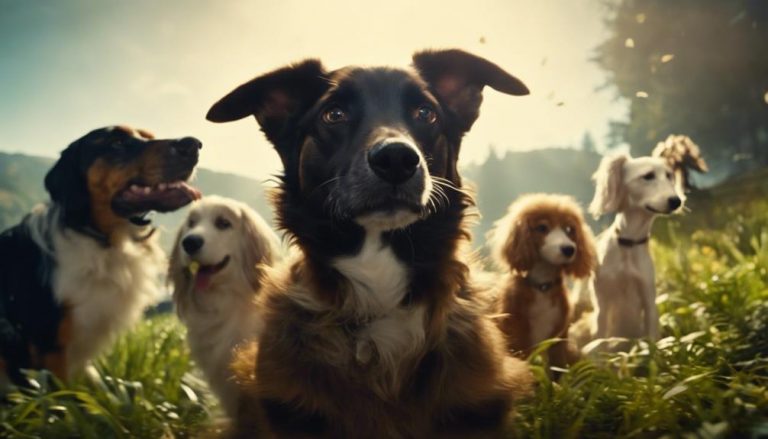Dog Honking Reverse Sneezing Explained
Reverse sneezing in dogs looks like they’re snorting or making a honking sound as they quickly pull air into their noses. This usually goes on for about half a minute and isn’t something to worry about. It happens because things like pollen, dust, or strong smells irritate their throats or nasal passages. Dogs with short faces or small breeds tend to have this happen more because of the way they’re built.
If your dog does this a lot, though, you should talk to a vet to make sure there’s not a bigger problem. There are ways to help manage and prevent reverse sneezing that can make your dog more comfortable.
Key Takeaways
- Reverse sneezing in dogs sounds like a snort or honk.
- Triggers include pollen, dust, or intense odors.
- Consult a vet for frequent or severe episodes.
Understanding Reverse Sneezing
Reverse sneezing is a common issue seen in dogs where they inhale quickly through the nose, making a unique snorting sound. This usually lasts for around 30 seconds. The dog is forcefully pulling air into its nose because it’s trying to clear something from its throat or nasal passages. This could be due to irritation or swelling in these areas, causing spasms.
Even though this condition seems alarming, it’s mostly harmless. However, if your dog keeps having these episodes, it’s wise to check with a vet to rule out any serious problems. Some dog breeds are more likely to experience reverse sneezing, which suggests that their physical build might make them more prone to it.
Knowing about reverse sneezing is important for dog owners. It helps you understand what’s happening with your pet and how you can help them.
Common Causes Explored
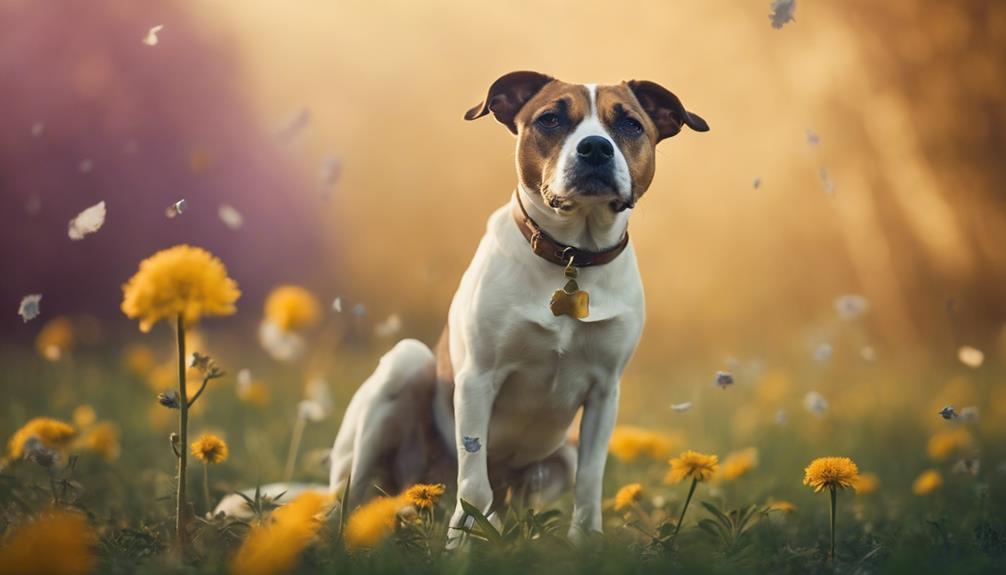
Understanding the common causes of dog honking, often referred to as reverse sneezing, is crucial. Allergic reactions are a major culprit, with pollen, dust, and mold irritating the throat and nasal passages. This can be exacerbated by household chemicals.
Breed-specific traits also influence this condition. Dogs with short faces, known as brachycephalic breeds, and small breeds with narrow throats are more prone to experiencing these episodes. This highlights the role of genetics in this health issue.
In short, both the environment and a dog’s genetic makeup can impact their susceptibility to reverse sneezing. Being aware of these factors can help pet owners better care for their furry companions.
Allergic Reaction Triggers
Various factors can make pets, especially dogs, uncomfortable by triggering allergic reactions. Things like pollen, dust, smoke, and strong smells are common culprits. These elements can seriously bother dogs with sensitivities, leading to issues such as reverse sneezing.
Household cleaners and perfumes are also to blame for some pets’ allergic reactions. These reactions often result in nasal irritation and post-nasal drip, showing how dogs react to such allergens. When pets encounter these triggers, either during walks or at home, they might experience reverse sneezing. This highlights the need for pet owners to recognize and steer clear of these allergens.
Understanding what causes these allergic reactions can help pet owners take steps to lessen the chances of reverse sneezing in their dogs. It’s all about creating a safe and comfortable environment for them.
Environmental Factors
Understanding how environmental factors impact your dog’s health is crucial, especially when it comes to preventing reverse sneezing episodes. These episodes are often triggered by irritants like dust, pollen, smoke, perfumes, and household chemicals, which can irritate your dog’s throat and soft palate.
To help manage and reduce these occurrences, start by identifying what triggers your dog’s reverse sneezing and try to limit their exposure to these irritants. For example, keeping your home clean and free from dust can make a big difference. If environmental factors like pollen are causing the issue, talking to your vet about antihistamines could be a beneficial step. Creating a safer environment for your dog also means being mindful about the use of perfumes and household chemicals around them.
Breed-Specific Tendencies
Understanding the role of breed-specific traits is essential when examining why some dogs experience reverse sneezing more than others. Short-nosed breeds, including Pugs and Bulldogs, are more prone to this condition due to their unique facial structure, which can amplify the sounds associated with reverse sneezing.
Small breeds, such as Beagles and Yorkshire Terriers, also tend to have more frequent episodes. As dogs get older, they might reverse sneeze more often, which is a normal part of aging.
Although reverse sneezing usually isn’t a sign of a serious problem, if your dog starts doing it more often or more intensely, it’s a good idea to see a vet to make sure everything is okay.
Recognizing the Symptoms
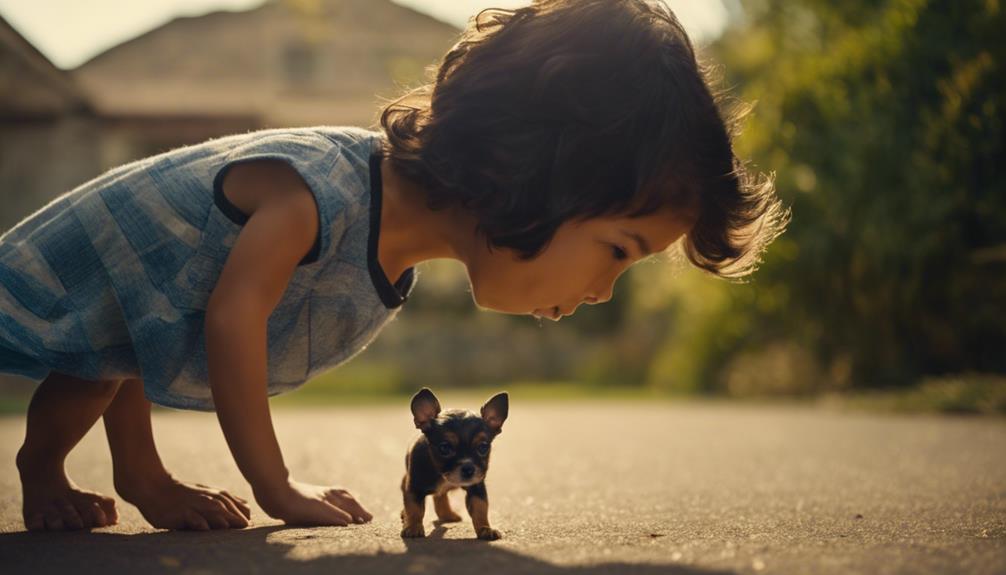
Recognizing Reverse Sneezing in Dogs
Understanding the signs of reverse sneezing in dogs is key to telling it apart from other breathing problems. This condition makes dogs inhale sharply through the nose, creating noticeable honking noises. It happens when the trachea narrows or when irritants affect the throat. Here’s what to watch for:
- Gasping and Snorting: Dogs struggling with this condition often gasp and snort forcefully. This is their way of coping with the reduced space in their trachea.
- Honking Noises: The most obvious sign is a loud, honking noise that happens as the dog tries to breathe in quickly through its nose.
- Body Language: A dog might change its stance during an episode. Look out for dogs stretching their necks, widening their eyes, or puffing out their chests. This body language is their attempt to make breathing easier.
Understanding these symptoms helps dog owners identify reverse sneezing and seek appropriate care. It’s a common issue that, while alarming to hear, often isn’t serious. However, knowing the difference between this and more severe conditions can ensure dogs get the right help when they need it.
Diagnosis and Treatment
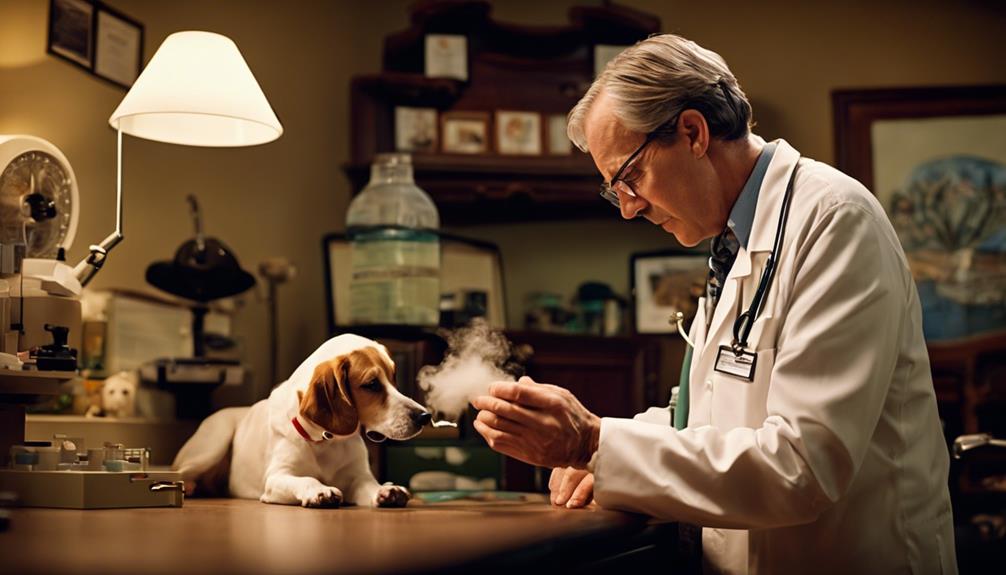
When it comes to figuring out if a dog is experiencing reverse sneezing, a vet will closely check the dog to make sure it’s not something more serious. They might need to do some tests like checking for allergies or looking at the dog’s blood. This helps them understand the big picture and provide the right care.
For managing symptoms, things like helping your dog stay calm, lightly rubbing their throat, or using a humidifier can make a big difference. If a dog keeps having these sneezing fits, it’s crucial to get a more in-depth check-up. Finding the root cause is key to keeping your dog happy and healthy, tackling reverse sneezing effectively.
In short, understanding and addressing reverse sneezing in dogs is all about observation, appropriate care, and sometimes medical intervention. It’s not just about the sneezing itself but ensuring your dog’s overall health is in check.
Managing Episodes Effectively
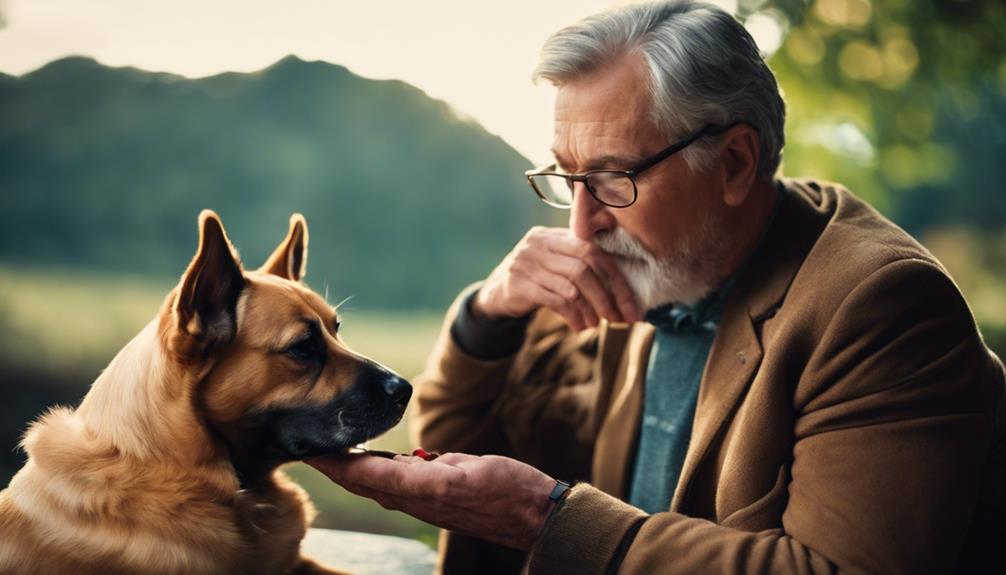
Ensuring your dog stays comfortable and healthy involves knowing how to handle reverse sneezing episodes effectively. When experiencing one, your dog might make alarming honking noises or seem to gasp for air through their nose. Here’s how to help your pet through these moments:
Gently rubbing your dog’s throat can ease the irritation causing the sneezing. This simple action can make a big difference.
Offering a bit of water can help calm the throat. Alternatively, lightly holding their nostrils shut for a moment encourages them to swallow, which often stops the honking. If the sneezing doesn’t stop, a gentle push down on your dog’s tongue can help open up airways, making breathing easier.
Understanding and applying these steps can reduce the stress for both you and your dog during these sneezing spells.
Breed-Specific Susceptibilities
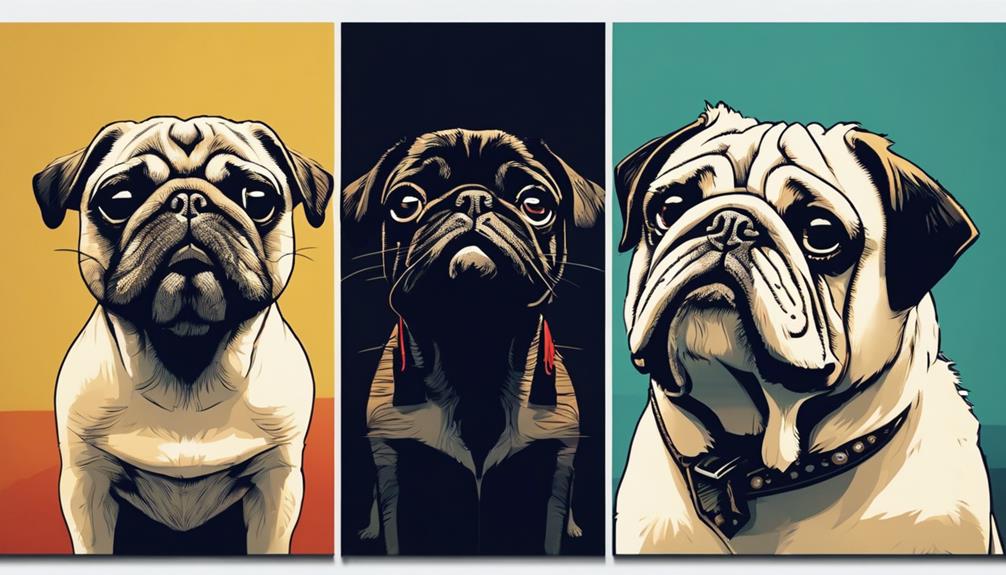
Understanding how some dog breeds are more prone to reverse sneezing is key for dog owners. This is particularly true for dogs with brachycephalic traits or those that are smaller in size. Breeds like Pugs, Bulldogs, and Shih Tzus have short noses and flat faces. These features make their airways narrow, which can lead to more frequent reverse sneezing. Small breeds, including Yorkshire Terriers, Chihuahuas, and Beagles, also face a higher risk of this condition.
For dogs such as Boxers, Boston Terriers, and French Bulldogs, excitement or physical activity can often spark an episode of reverse sneezing. It’s vital to keep an eye on these episodes. They could be a sign of deeper respiratory issues. If your dog is showing signs of reverse sneezing, it’s a good idea to take them to a vet for a check-up to ensure they stay healthy and happy.
Prevention Strategies
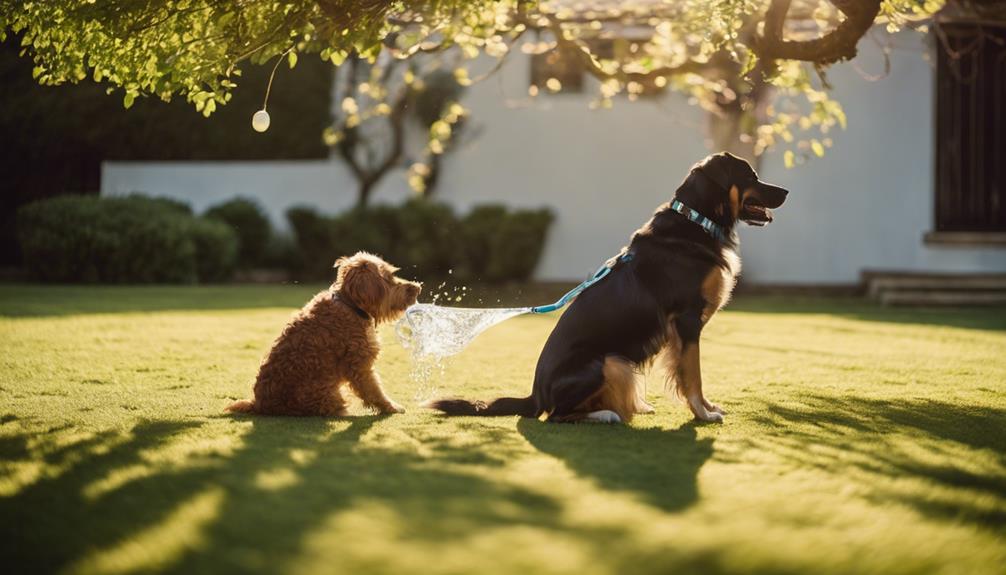
Implementing effective strategies can significantly lower the chances of reverse sneezing in dogs, especially those breeds that are more prone to it. By recognizing and dealing with potential triggers, pet owners can make their dogs’ lives more comfortable.
Here are some key strategies:
- Reduce Exposure to Irritants: Keeping your home clear of dust, smoke, and strong odors is crucial. It’s best to avoid using scented products or cleaners that might bother your dog’s breathing.
- Keep Stress Low: Ensuring your dog gets enough physical activity and mental challenges is important. A peaceful and stable home environment can help lessen stress-related reverse sneezing.
- Extra Care for Short-Nosed Breeds: Breeds with short noses need more attention, as they are more likely to have respiratory issues. Keep an eye on their health and surroundings for any signs of discomfort.
Taking these steps and being observant can reduce how often and how severely your dog experiences reverse sneezing episodes.
When to Consult a Vet
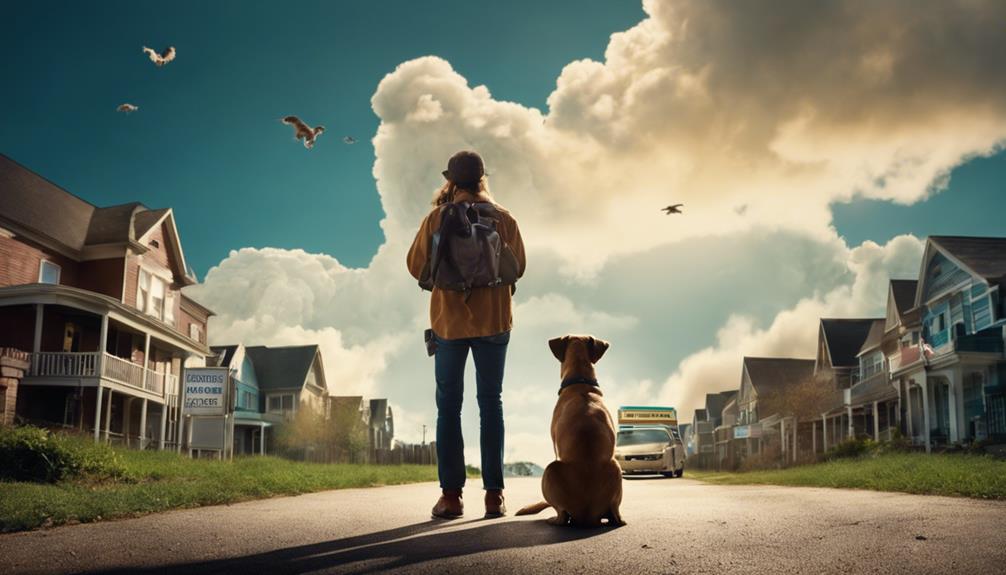
While reverse sneezing in dogs is generally not a cause for concern, there are times when you should get a vet involved. If your dog starts having these sneezing fits more often, if they seem to be struggling more during an episode, or if they show other signs of being unwell, it’s wise to get them checked out. Immediate veterinary care is crucial if the reverse sneezing doesn’t stop, or if your dog is having a hard time breathing, seems weak, or their gums are an unusual color. They might need tests, like allergy screenings or bloodwork, to figure out what’s causing the frequent sneezing.
Also, if you notice any new or worsening changes in how your dog’s breathing sounds, it’s time for a vet visit. Catching and treating any respiratory issues early on is vital for keeping your dog healthy and happy.
Frequently Asked Questions
Why Is My Dog Honking When He Reverse Sneezes?
- Allergies cause your dog’s honking.
- Excitement leads to this unique sneeze.
- Certain breeds are more prone.
Why Does My Dog Reverse Sneeze Sound Like Choking?
- Irritation in the nose can make dogs sneeze differently.
- Certain breeds are more prone to this sneezing issue.
- Allergies and surroundings often trigger these sneezes.
When Should I Worry About Reverse Sneezing in Dogs?
- Consult a vet if reverse sneezing doesn’t stop or worsens.
- Notice if it’s related to allergies or changes in seasons.
- Act if it affects their ability to exercise normally.
Is Reverse Sneezing in Dogs Congestive Heart Failure?
- Reverse sneezing doesn’t mean heart failure.
- Look for allergies or respiratory issues.
- See a vet for correct diagnosis.

